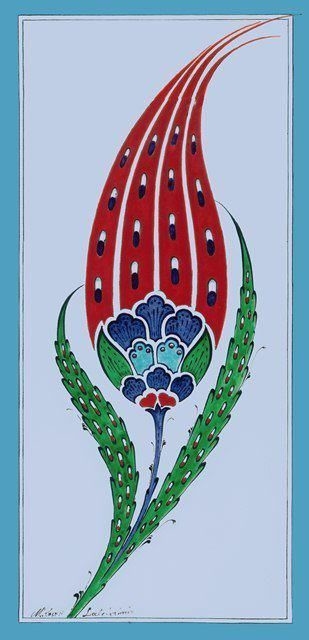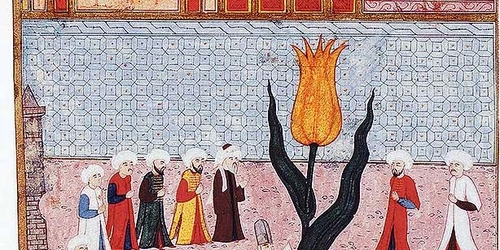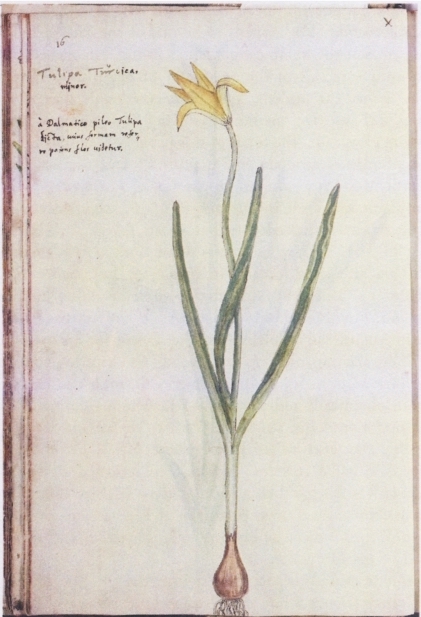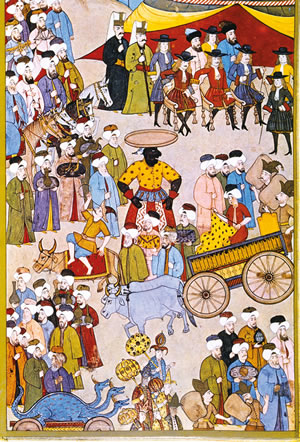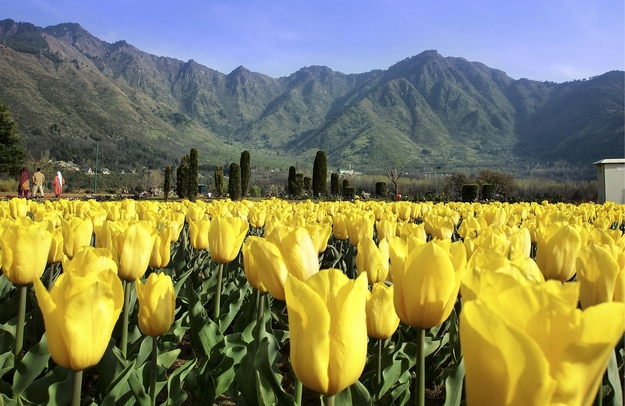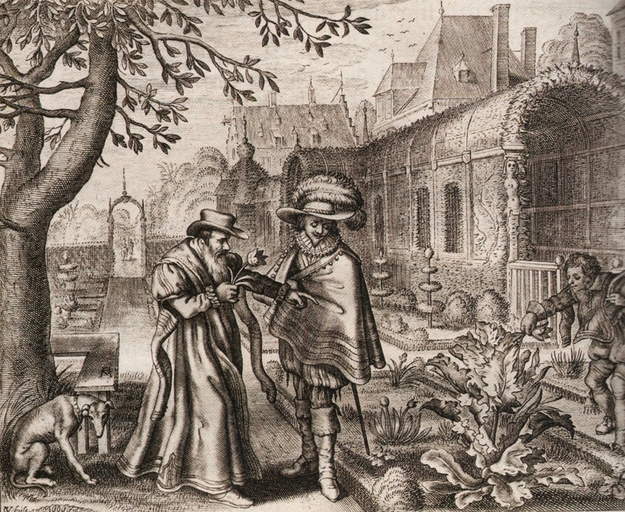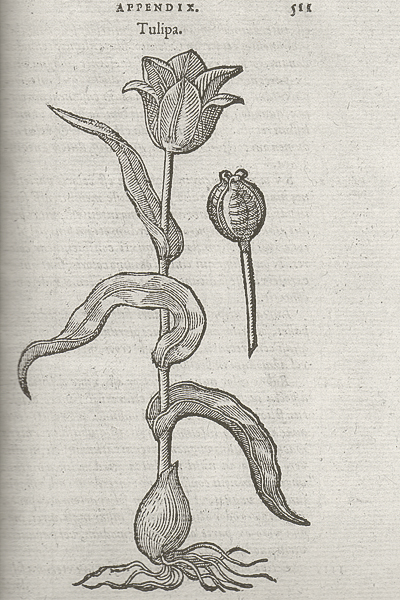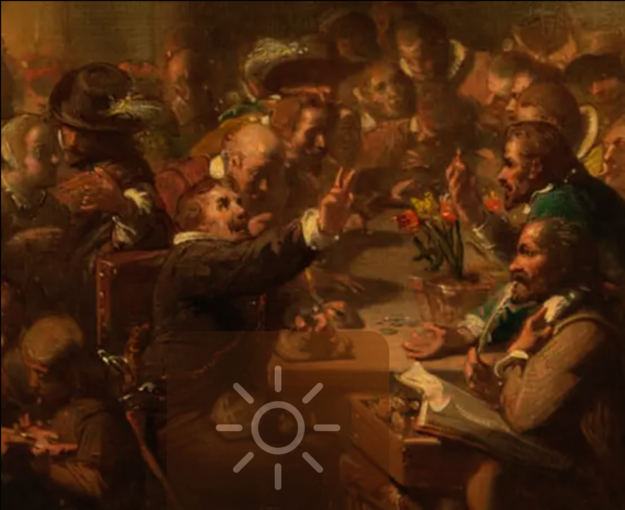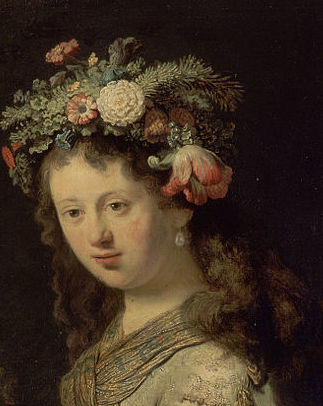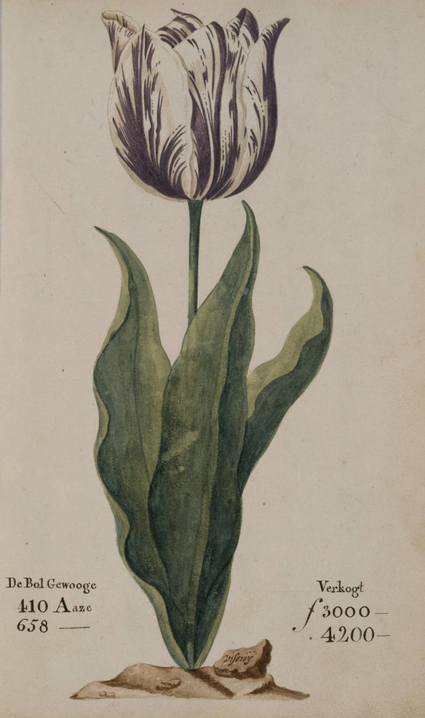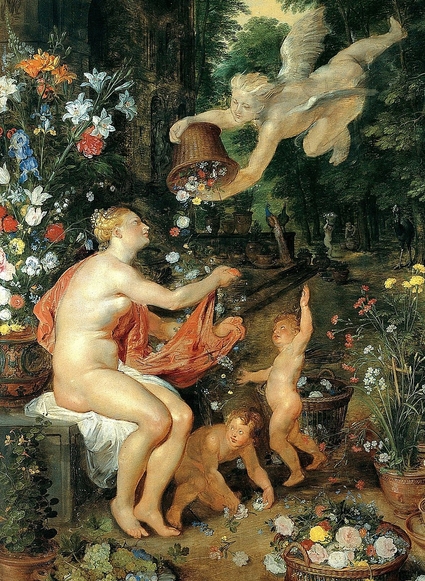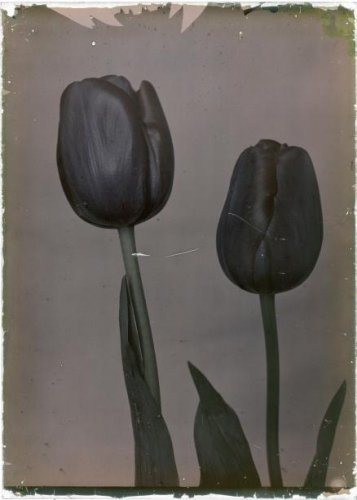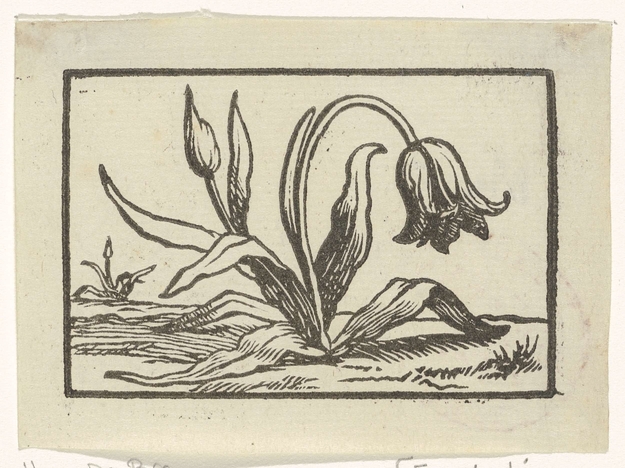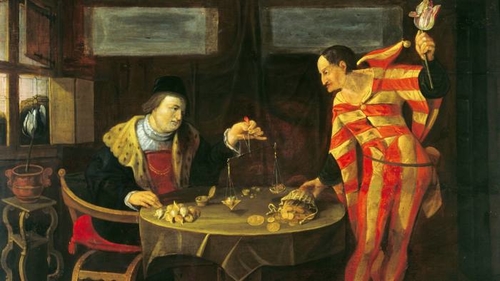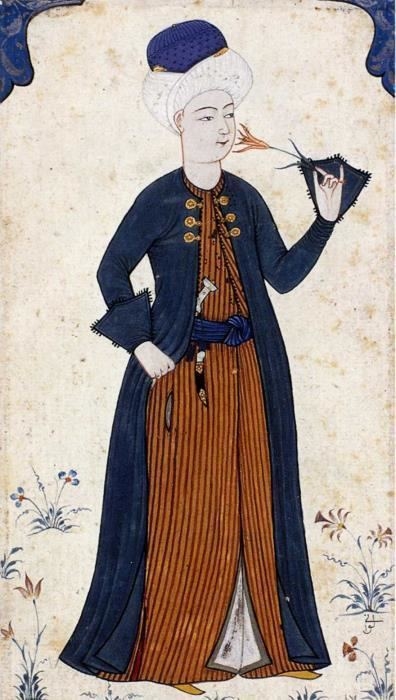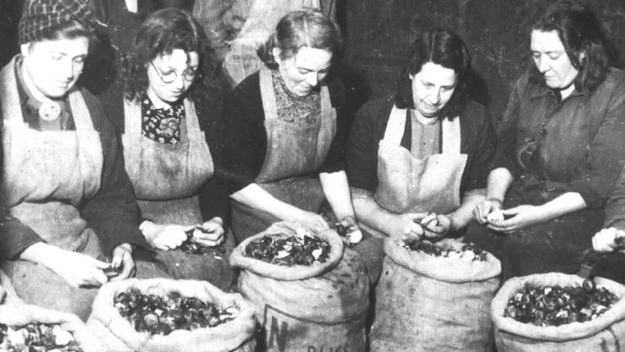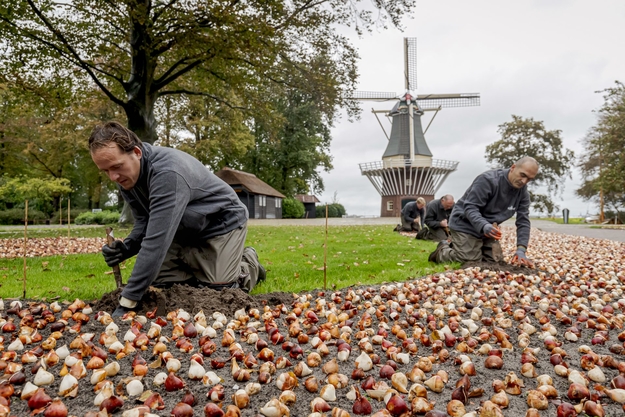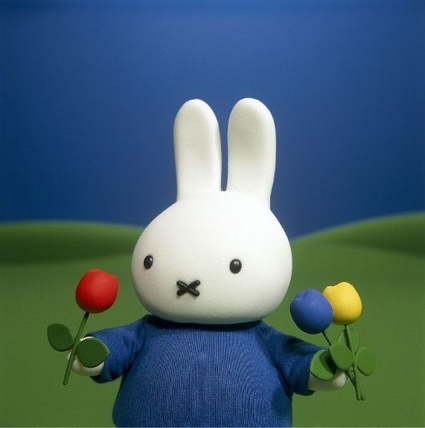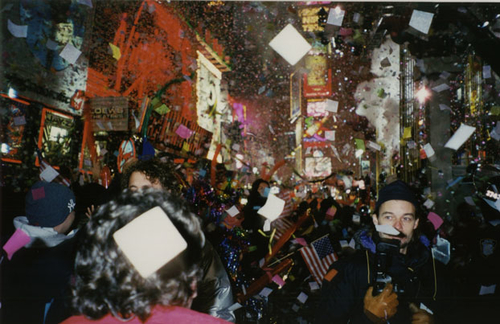Hover over the portrait of each Tulp member to find more about her life.
946 CE*. Name not retrieved, bloomed in the Kazakhstan border of Tian Shan amidst snow.
Enlarge
Tulips in Himalaya - Captured by the Turks who in turn were captured by her flame in the midst of Himalayan snow on their way of invading the valleys. From here begins the matrilineal heritage of the Tulp family.
Image source: https://pixabay.com/photos/flower-tulips-spring-garden-nature-5233991/
1079 CE. “Chalice of Heaven”, bloomed in Shiraz, Persia was the cup that contained the sky.
1540 CE. “Lâle”, bloomed in the Abode of Bliss, Sultan Süleyman’s private garden, Istanbul, Turkey.
1550 CE. “The yellow lily”, bloomed in Padua, Italy.
1556 CE. “Tulipan”, bloomed in Istanbul, the Ottoman Empire.
1563 CE. “Turkish onion blossom”, bloomed in the garden of a merchant who mistook it to be an onion in Antwerp, the Low Countries.
Enlarge
Turkish onion blossom - She bloomed in the garden of a merchant who received it as a gift alongside the fabrics he traded from the Ottoman empire, in Antwerp, the Low Countries. Majority of her sisters were boiled and eaten by the same merchant who thought of them as “some Turkish onion”.
Image source: https://commons.wikimedia.org/wiki/File:Queboorn_tulips.tif
1576 CE. “Tulipa clusiana”, bloomed and mummified between the pages of a book, in Leiden, the Low Countries.
Enlarge
Tulipa clusiana - She bloomed and mummified between the pages of a book, in the botanical garden of Carolus Clusius in Leiden, the Low Countries. Clusius developed the first comprehensive treatises of the Tulp family throughout his career. He was impressed by the likelihood with which they mutated into numerous varieties, noting that no other flower was remotely as diverse. The direct descendant of Tulipa clusiana , named in the honor of the botanist, can be visited today in the Hortus Academicus of Leiden…
1585 CE. Anonymous, bloomed and fell in Antwerp, the United Provinces.
Enlarge
Fallen in Antwerp - Anonymous, bloomed and fell in Antwerp, the United Provinces. Descendents of the flower and many more new cultivars were brought by human refugees and immigrants who fled from the Spanish power in the southern Netherlands to the north, especially to Amsterdam, making them more widely available than ever.
Image source: https://en.wikipedia.org/wiki/Fall_of_Antwerp#/media/File:Famiano-Strada-Histoire-de-la-guerre-des-Pa%C3%AFs-Bas_MG_8981.tif
1635 CE. “The Gambler’s Passion”, bloomed in the cloister of a Dutch clergy.
Enlarge
The Gambler's Passion - She bloomed in the cloister of a Dutch clergy. Tending to the Tulp family was increasingly becoming a sound investment, and people of all occupations and classes ranging from carpenters and confectioners to herdsmen and priests devoted themselves to ensuring the proliferation of the Tulps.
Image source: https://allthatsinteresting.com/tulip-mania
1637 CE. “Semper Augustus (Always Majestic)”, bloomed in Leiden, the United Provinces.
Enlarge
Semper Augustus on Rembrandt's "Flora" - She bloomed in Leiden, the United Provinces, infected with a congenital condition caused by Potyvirus that nicknamed her as “Flame Flower” or as later known, “Rembrandt’s Tulip” when she became an inspiring muse for the painter. By her generation the Tulps have become very different from their wild ancestors, both in their physical phenotypes and the regards paid to them by human species. A promise of transcendence from everyday drudgery and low wages, her mirage drew artisans like moths to…
1637 CE. “Fraud”, said to belong to the Viceroy cultivar when she was sold but bloomed a Violetten in Haarlem, the United Provinces.
Enlarge
Illustration of a Viceroy tulip - For it was impossible to assess the pedigree of the Tulp members from the physiognomy of their bulbs, some managed to sell the Tulps for a much higher price by convincing the buyer that they belonged to rare cultivars such as the Viceroy (the cultivar of Semper Augustus), along with the illustrations of their direct ancestors. Some sold Tulp bulbs that they stole, others used wine to affect the complexion of the Tulp, giving rise to Tulp bulbs as intoxicated as those who dealt them in the…
1637 CE. “Flora, wife of Zephyr the Wind”, bloomed in January 1637, Amsterdam, when her price increased by 2000 times over the course of three weeks.
Enlarge
"Flora and Zephyr" by Brueghel the Elder and Rubens - "Flora" bloomed in January 1637, Amsterdam, when her price increased by 2000 times over the course of three weeks. The Dutch referred to the reign of the Tulps in the 1630s as windhandel , “trading in the wind”, which for some meant the freedom and unregulated activity, to some, difficulties in predicting the weather and navigating in it, and to others a bundle of mere papers flying in the air.
Image source: https://commons.wikimedia.org/wiki/File:Jan_Brueghel_the_Elder_%26_Peter_Paul_Rubens_
???. “The Black Tulip”, a legend— date of bloom unknown, presumably in mid-1630s if she was a real figure, place of bloom allegedly a garden of a poor cobbler in the Hague.
Enlarge
Black tulip - The date of bloom for this legendary Tulp member is unknown, presumably in mid-1630s if she was a real figure, place of bloom allegedly a garden of a poor cobbler in the Hague. According to the legend, a group of florists from Haarlem visited the cobbler upon hearing that he succeeded in her upbringing, who after much bargaining agreed to sell her for 1,500 guilders. The florists then threw the flower to the ground and trampled on her, exclaiming that they too have a black Tulp which is now…
1637 CE. “Flora, Goddess of Whores”, bloomed in March 1637, Amsterdam, a late-bloom twin of “Flora, wife of Zephyr the Wind”.
Enlarge
"Flora's Wagon of Fools" by van de Passe - "Flora, Goddess of Whores" bloomed in March 1637, Amsterdam, a late-bloom twin of “Flora, wife of Zephyr the Wind”. February 3rd 1637 was not unlike any other day, until that evening when no one in the tavern bid in response to the auctioneer’s offer. Silence fell to everyone’s horror. The reign of the Tulp seemed to have come to an end. She was the model for a pamphlet illustration by Pieter Nolpe. The caption read: Flora’s Fool’s Cap, or Scenes from the Remarkable Year 1637 when one Fool…
1 637 CE. Anonymous, the last Tulp to be sold in February 1637, Haarlem, to never be retrieved by the purchaser.
Enlarge
A bowing tulip - On February 23rd, representatives of the growers decided that while purchases before November 30, 1636, that is, the last planting season, are still binding, those made afterwards could be canceled and buyers were to pay 10% of the sale price to compensate. A preemptive decision, considering that the Tulp trade started amongst the wealthy and it was only since December that it attracted the masses from lower social classes, and they could not realistically be expected to be able to pay anyway.
1639 CE. “Centerpiece”, bloomed in a household in Rotterdam, the United Provinces.
Enlarge
Tulip fever- who's to blame? - "Centerpiece”, bloomed in a household in Rotterdam, the United Provinces. Two years since the end of their reign, the Tulps remained a popular dinner table gossip. Who was to be accounted for the cult of Flora? After all, how could a madness of such a magnanimous scale rise amongst civilized citizens? The bankrupts started the fraud, one said— after all, they were not the most pious devotees of the sacred Dutch virtue of humble living within one’s means to begin with. That’s not true, another…
1718 CE. “Peace”, bloomed in Ankara, the Ottoman Empire.
Enlarge
Tulip painting by Abdulcelil Levni, artist of the Tulip Period - “Peace”, bloomed in Ankara, the Ottoman Empire. In the country of her supposed origin (for it was long forgotten that her ancestors were the blossoms of the mountains), the Tulps once again became the embodiment of another artistic and cultural blooming, Lâle Devri (“Tulip Period”). The Ottoman Empire has established new trade relations with Europe with aspirations that marked modern consumerism. Yet those who saw her were always reminded of the past, the romanticized opulence of the royal…
1945 CE**. “Survivor”, bloomed in May 1945, Rotterdam, the Netherlands.
Enlarge
Surviving on tulip bulbs - “Survivor”, bloomed in May 1945, Rotterdam, the Netherlands. All her sisters were made into stew or cookies during the hongerwinter . She was lucky to have hidden between the roots of a forsythia tree. When she finally rose from the dirt, she and others witnessed the miracle of a spring long awaited.
Image source: https://nos.nl/75jaarbevrijding/bericht/2320868-ook-gaarkeukens-gebruiken-nu-tulpenbollen.html
1946 CE. “Operation Black Tulip”, bloomed in September 1946, Amsterdam, the Netherlands.
Enlarge
Operation Black Tulip - She bloomed in September 1946, Amsterdam, the Netherlands. After the war, the forced deportation of nearly 4000 Germans living in the Netherlands was named after her legendary ancestor "The Black Tulip".
Image source: https://en.wikipedia.org/wiki/Operation_Black_Tulip#/media/File:Vertreibung.jpg
1950 CE. “Spring Flower”, bloomed in Lisse, the Netherlands.
Enlarge
Spring flowers in Keukenhof - She bloomed in Lisse, the Netherlands. Twenty growers and flower traders decided to exhibit a series of spring blossoms in Keukenhof. Since then, 7 million Tulps bloom in Keukenhof annually.
Image source: https://keukenhof.nl/en/news/keukenhof-start-seizoen-2021/
1957 CE†. “Item no. 17,428,332”, bulb conceived in 1956, Aalsmeer, Netherlands, bloomed a year later in Perth, Australia.
Enlarge
Tulip market in Aalsmeer - The Keukenhof may be the most populated Tulp community in the world, but it is not the biggest temporary residence of unbloomed Tulps. What began in two pubs in Aalsmeer, 1910 have grown into the largest flower auction and the largest covered commercial building in the world. 80% of all the daughters of the Tulps move from the Netherlands to the rest of the world.
Image source: http://www.flowerexperts.com/auction_clock.asp
1962 CE. “Golden Tulip”, bloomed a Dutch international hotel chain.
Enlarge
Logo of Golden Tulip - Bloomed a Dutch international hotel chain. A new group of Tulp growers emerged in the Netherlands— exemplar implantations of Tulp in business models include Tulip Computers (1979), Tulip Oil (2010) and others.
Image source: https://www.goldentulip.com/en-us/
1987 CE. “Tulipani”, a trio that bloomed in the field of San Siro football stadium, Milan, Italy.
Enlarge
Tulipani - “Tulipani”, a trio that bloomed in the field of San Siro football stadium, Milan, Italy. Despite being Homo sapiens sapiens at birth, footballers Marco van Basten, Frank Rijkaard and Ruud Gullit were bestowed the honorary name of the Tulp by the Dutch citizens in recognition of their achievements. Gullit was even conferred the title “The Black Tulip” in reference to the legendary Tulp figure in mid-1630s.
Image source: https://thesefootballtimes.co/2018/08/27/the-perfect-harmony-of-marco-van
1998 CE. “Miffy’s Favorite Flower”, bloomed in Miffy ’s garden, Cartoon Network, on the screens of more than 100 million U.S. households.
Enlarge
Miffy's favorite flower - She bloomed in Miffy ’s garden, Cartoon Network, on the screens of more than 100 million U.S. households. She was a particularly flourishing member of the Tulps, able to grow in any type of environment of any size and medium, from paper to metal, from school bags to bedtime stories.
Image source: https://miffyblogs.com/2016/11/18/growing-tulips/
2000 CE. “Smell of the Netherlands”, bloomed from one of the 225 kinds of scent petals that rained throughout Gayil Nalls’s World Sensorium , Time Square, New York, the United States.
Enlarge
World Sensorium - The “Smell of the Netherlands” bloomed from one of the 225 kinds of scent petals that rained throughout Gayil Nalls’s World Sensorium , Time Square, New York, the United States. The artist had asked governments to choose olfactory representations of their nations to compose this ephemeral sculpture. The Tulps are not particularly known for their bodily odor, which is quite mute for a floral family, rather smells of canal water, cannabis and cow dung might be what most Dutch are reminded of when…
???. To be named, and therefore to be bloomed, in unknown time(s) and place(s). The Tulps permeate every facet of the Netherlands and beyond, geographically and otherwise. She may live and die on a front porch, she may adorn a bike bell, she may be sung in a march. The next time you encounter her, bow a bow of imagination— to the expanse of her stories in becoming, and continuing to become, the Tulp.
*The first ancestor of the Tulp family has not been identified, but for clarity the earliest identified ancestor has been marked the first in this genealogy list.
**Mentions of descendants of the Tulps from 1719 to 1944 in official records and/or private notes have not been found so far, perhaps due to a decline of regard for floral and other natural agents during this period.
† From here, we lose track of 2 billion and more Tulp descendants that travel from the Netherlands to all over the world every year. The genealogy of the Tulps is more non-linear than ever. We highlight some of the most renowned members of the family in the rest of the genealogy, many of whom proliferate and live immortal lives across many fields.
References
Boissoneault , Lorraine. "There Never Was a Real Tulip Fever". Smithsonian . 2017. https://www.smithsonianmag.com/history/there-never-was-real-tulip-fever-180964915/
Dash , Mike. Tulipomania: The Story of the World’s Most Coveted Flower and the Extraordinary Passions It Aroused. Three Rivers Press, 1999.
De Rooi , Martijn. The Dutch, I Presume? Icons of the Netherlands. N&L Publishing, 2009.
Khayyám , Omar. Translated by Edward Fitzgerald, in The Rubáiyát of Omar Khayyám, Third Edition, no. 40 , 1872.
Pertwee , Sean, director. 2013. The Tulip Bubble . Moconomy.
